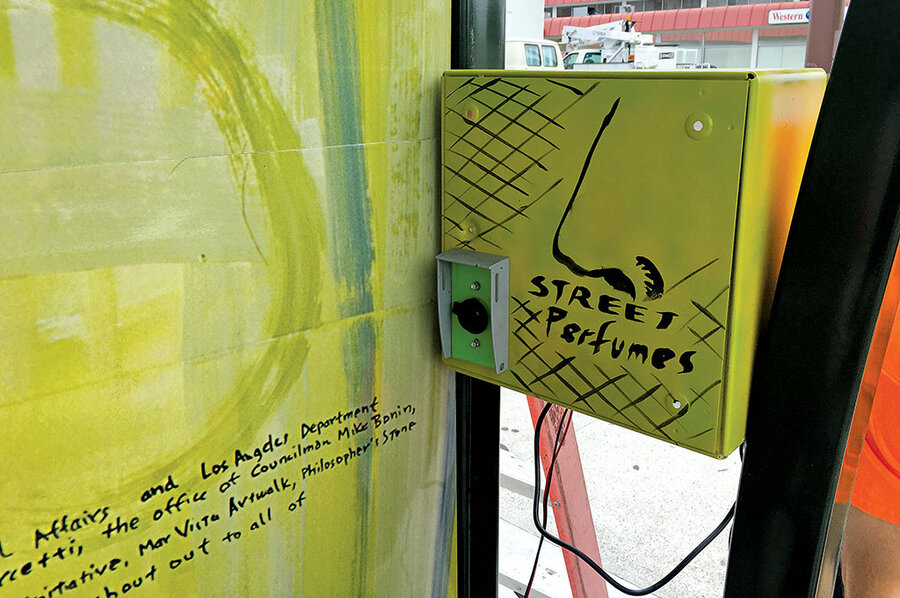Artists team up with planners for urban change
Loading...
When photographer Peter Svarzbein found out city planners in El Paso, Texas, were considering reviving trolleys to revitalize the downtown area, he had art ready to lend to help muster support.
In a conceptual piece about a trolley line that once connected El Paso and Ciudad Juárez, Mexico, Mr. Svarzbein highlighted a shared story of the border cities. His posters and an actor dressed as a conductor tapped into nostalgia and a sense of possibility.
The trolley cars will start rolling next year.
“What artists can do is imagine something not as it is, but as it can be,” Svarzbein says. Svarzbein is in an even better position to keep pushing for transit to Ciudad Juárez; he was elected to El Paso’s city council in 2015.
For now, the new trolley that will serve El Paso is among an increasing number of innovative projects integrating arts into urban planning, says Ben Stone. Mr. Stone last year took a new position as director of arts and culture for Smart Growth America and the organization’s program Transportation for America, which advocates better transportation across the country.
Stone says artists are experienced at gathering diverse voices, celebrating local history, and connecting with communities. Planners want to do that better, particularly as they address past mistakes such as highways that destroyed poor and minority neighborhoods.
Mark VanderSchaaf, a former Minneapolis-St. Paul regional planner, says artists can help his colleagues do “full justice to the human experience of a place.”
Multimedia artist Alan Nakagawa was asked to help people envision Los Angeles roadways as spaces to linger, not just routes for cars. The “art perfumes” Mr. Nakagawa developed to waft over a corner of Venice Boulevard include a coffee-laced scent evoking the bistros that signal economic change. “Artists have always generated work in support of or in reaction to what the community is going through,” Nakagawa said.







